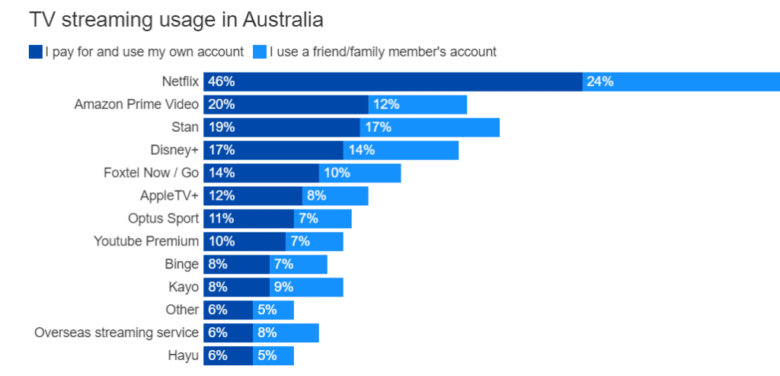Australia’s entertainment industry has always been a thriving scene, and in recent years, it has experienced significant growth and transformation as it adapts to cater to the ever-changing tastes and preferences of consumers. With advances in technology and shifts in consumer behavior, several trends are emerging that are shaping the Australian entertainment landscape.
In this article, we delve into the current entertainment trends in Australia, exploring areas such as the increasing role of advertising in the industry, the expanding influence of smartphones, the rise of online video consumption, and the growing importance of the gaming sector, including the world of iGaming. As we discuss these trends, we will also examine their implications for the market, industry professionals, and consumers alike, offering insights into the future direction of the Australian entertainment industry.
Contents
- The Surge in Online Video Consumption
- Gaming: A Lucrative Market with Untapped Potential
- Entertainment and Media Law Reforms
- Smartphones: The All-In-One Entertainment System
- The Rise of Virtual Reality and Augmented Reality
- Embracing Eco-Friendly Practices in the Entertainment Industry
- The Popularity of Podcasts and Audiobooks
The Surge in Online Video Consumption

Source: takeatumble.com.au
A significant trend shaping the Australian entertainment industry is the extraordinary rise in online video consumption. Leading subscription video-on-demand services, such as Netflix, Amazon Prime, and Stan, have become major players in this rapidly growing sector. On average, Australians spend about seven hours and 28 minutes per month watching online videos, which include a wide variety of content, from streaming shows and movies to YouTube videos and visual media shared on platforms like Facebook and Instagram.
The popularity of online video content has been steadily increasing, and this trend is expected to continue in the foreseeable future. With projections estimating a substantial 27% annual growth in online video consumption rates, it is evident that this form of entertainment will play an even more prominent role in the Australian entertainment landscape.
Gaming: A Lucrative Market with Untapped Potential
The gaming industry is another powerhouse in the Australian entertainment sector, generating more revenue than movies and music combined. Video games on various platforms, including portable devices like tablets and smartphones, are driving this growth. This market expansion has created more job opportunities for game development, digital design, programming, animation, production, marketing, and sound design.
One area within the gaming sector that has seen significant growth is iGaming. Online gambling sites have become increasingly popular, with numerous gambling sites Australia catering to the growing demand for online casinos, sports betting, and poker. This thriving market offers a diverse range of gaming experiences, attracting more and more Australians to try their luck and enjoy the entertainment offered by these platforms.
Bridging the Gender Gap in the Gaming Sector

Source: girlgeekacademy.com
While the gaming sector continues to boom, there remains a significant gender gap that the industry must address. Interestingly, half of the gamers in Australia are female, yet a staggering 82% of employees within the sector are male. This underrepresentation of women, particularly in senior positions, calls for initiatives to encourage and support their entry into the industry. Events like #SheHacksGames, an all-woman gaming marathon, are a step in the right direction to normalize and promote women’s involvement in the gaming sector.
Entertainment and Media Law Reforms
As the Australian entertainment sector undergoes continuous evolution, it becomes increasingly important for the legal frameworks governing it to adapt in tandem. Legislators and regulators are actively working to revise and update the laws that oversee the industry, with the aim of accommodating the changing landscape brought about by the surge in online entertainment.
In 2017, the Federal Government enacted the most substantial media reforms in three decades. These reforms included the abolition of broadcast license fees, which had previously placed significant financial strain on traditional media companies. By eliminating these fees, the government aimed to help traditional media compete more effectively with online platforms.
Additionally, the reforms involved the removal of media ownership rules that restricted the growth and consolidation of media companies in Australia. This change aimed to promote greater competition within the industry and enable media organizations to expand and adapt to the shifting market dynamics.
These changes in legislation reflect the growing concern among media organizations that existing laws have become outdated, given the rapid advancements in technology and the prevalence of online entertainment. Moreover, it highlights the recognition that certain forms of media, such as community radio stations and regional television broadcasters, require additional federal funding support to sustain their operations and continue contributing to Australia’s diverse media landscape.
Smartphones: The All-In-One Entertainment System

Source: medium.com
Smartphones have indisputably revolutionized the entertainment industry, with a staggering 88% of Australians possessing these versatile, portable devices. There has been a notable increase in the number of Australians utilizing smartphones for their entertainment needs, as evidenced by the tripling of users between 2016 and 2017. This upward trend appears to be maintaining its momentum, showing no indications of slowing down in the foreseeable future.
These powerful, pocket-sized gadgets have become the primary means for consumers to access various forms of entertainment, such as streaming music and video content. Popular platforms like Spotify, Netflix, and YouTube have gained immense popularity, allowing users to enjoy their favorite tunes, movies, and TV shows on demand. Additionally, gaming enthusiasts can access a vast array of mobile games, ranging from casual, time-passing puzzles to more immersive, graphics-intensive titles. The convenience and ease of use have made smartphones the go-to device for consumers seeking instant gratification when it comes to entertainment.
As technology continues to advance at a rapid pace, it is highly likely that smartphones will play an even more significant role in shaping the future of the Australian entertainment landscape. The development of faster, more reliable internet connections, such as 5G networks, will facilitate seamless streaming and enhanced user experiences. Virtual reality (VR) and augmented reality (AR) technologies are also poised to become more mainstream, integrating with smartphones to provide immersive, interactive entertainment experiences like never before.
The Rise of Virtual Reality and Augmented Reality
Virtual Reality (VR) and Augmented Reality (AR) technologies are emerging as promising trends in the Australian entertainment sector. These immersive technologies have the potential to revolutionize the way people consume content, offering users a more engaging and interactive experience. While VR and AR are still relatively niche markets, major tech companies are investing heavily in these technologies, indicating their potential for growth in the coming years.
In Australia, VR and AR experiences are becoming more commonplace in entertainment venues, such as cinemas and theme parks, as well as in industries like real estate, healthcare, and education. As these technologies become more accessible and affordable, the demand for VR and AR content is expected to increase, creating opportunities for content creators, developers, and designers.
Embracing Eco-Friendly Practices in the Entertainment Industry

Source: aarp.org
As awareness of environmental issues grows and the need for sustainable practices becomes more pressing, the Australian entertainment industry is actively working towards adopting eco-friendly strategies. Across different sectors, including film and television productions, live events, and concerts, measures are being taken to reduce carbon footprints, conserve resources, and encourage sustainable practices.
For instance, film and television productions are increasingly opting for energy-efficient lighting, digital workflows, and eco-friendly materials, while also considering sustainable transportation and catering options. In the realm of live events and concerts, organizers are making use of renewable energy sources, implementing waste reduction measures, and promoting recycling initiatives. Additionally, artists and performers are increasingly advocating for environmental causes, raising awareness, and inspiring change among their audiences. This shift towards environmentally-conscious practices in the entertainment industry highlights a collective commitment to addressing global challenges and fostering a more sustainable future for all.
The Popularity of Podcasts and Audiobooks
Podcasts and audiobooks have gained significant traction in Australia, providing consumers with an alternative form of entertainment that can be enjoyed on the go. The popularity of podcasts has been driven by the wide range of content available, catering to various interests, from true crime and investigative journalism to lifestyle and self-help topics.
Similarly, audiobooks have experienced a surge in popularity, with Australians increasingly opting for this format to access literature, non-fiction works, and educational materials. This growth can be attributed to the convenience and flexibility offered by audiobooks, allowing users to multitask while consuming content.

Source: pwc.com
In conclusion, the Australian entertainment industry is witnessing a period of rapid growth and transformation, driven by several key factors. These include the rise of online video consumption, the expanding gaming sector (encompassing both traditional video games and iGaming), the shift towards digital advertising, and the adoption of emerging technologies such as virtual reality (VR) and augmented reality (AR). As these trends continue to evolve and gain momentum, they will undoubtedly play a significant role in shaping the future of the entertainment landscape in Australia.
This dynamic environment presents both exciting opportunities and unique challenges for industry players, from content creators to advertisers and beyond. Consumers, too, will benefit from an increasingly diverse and innovative entertainment landscape, as they engage with new forms of content and experiences. As we look ahead, it’s clear that the Australian entertainment industry is poised for even more growth and evolution in the coming years, driven by these and other emerging trends.
